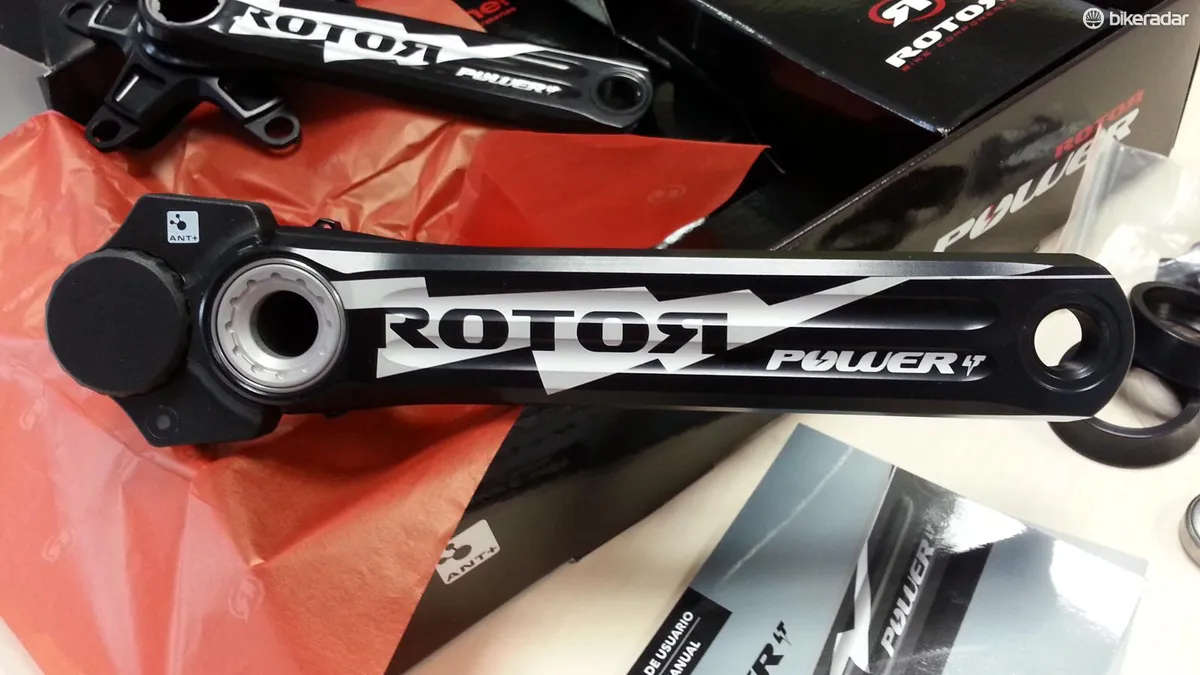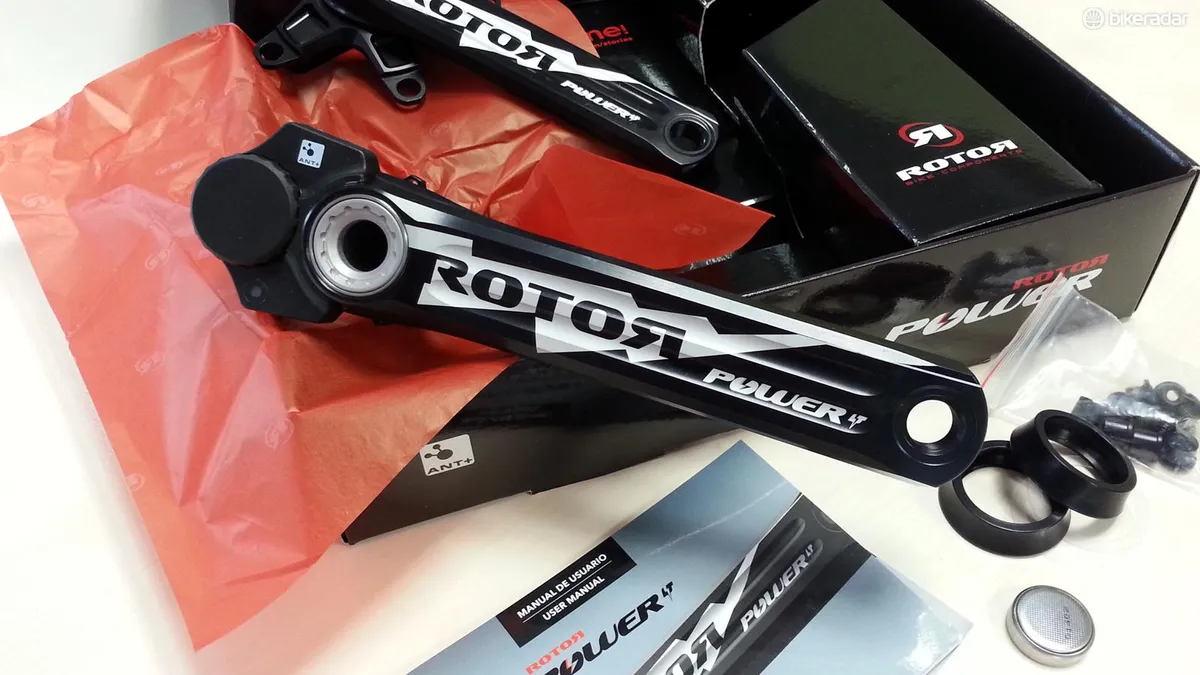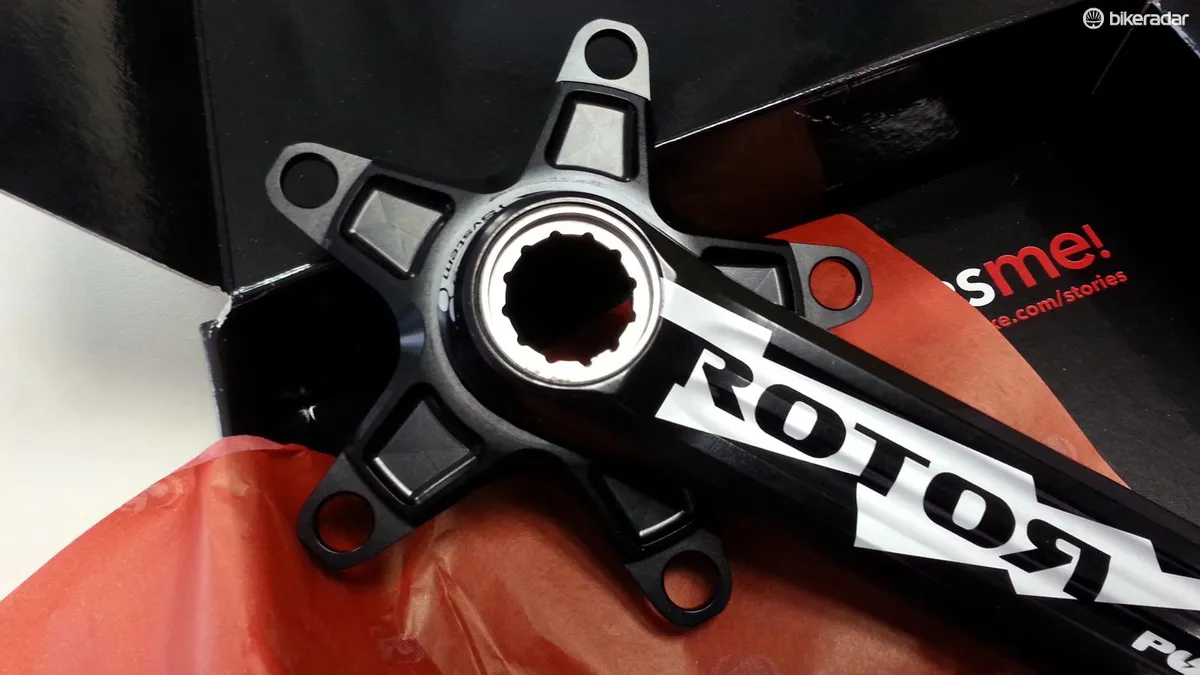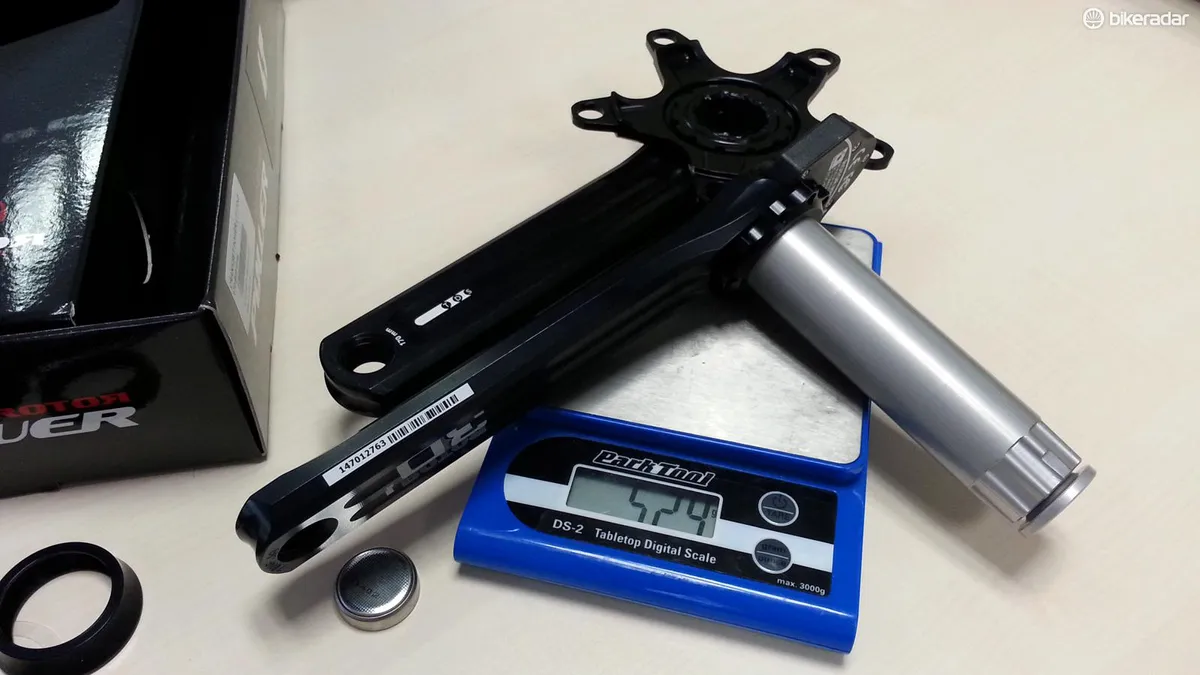Rotor’s new Power LT power meter was recently spotted at the Tour de France and it’s now available to all for £799 (US$1,490 / €990 / AU$1,799). A direct competitor to Stages Cycling’s unit, power is measured only from the non-driveside crank arm as opposed to the full Rotor Power set-up, which features four strain gauges in each arm.
Our 170mm, 110BCD unit weighs in at 524g without chainrings, 720g with Rotor Q-rings installed and 729g with the CR2477T battery in. This is a little heavier than a Shimano Dura-Ace 9000 crankset with Stages installed (652g with rings, 513g without), but remains an impressively light setup.

The crank arm is exactly the same as the full version of the Rotor power system
On the UK market at least, the Rotor LT is exactly the same price as the Stages Dura-Ace model, but bear in mind that the Rotor system comes with a full crankset – albeit without rings – as opposed to the crank arm-only Stages option. For now, this makes it the best value high-end power meter crankset in the UK. In the US, however, the Stages Dura-Ace model sells for substantially less, at US$899 (roughly £530).
The Rotor 3D+ crank arm has a chunky addition at the bottom bracket end, which measures torque and cadence in the left leg to produce a power figure via equation wizardry for both legs, transmitting that outputted wattage via ANT+ to your head unit.
Although the additional hardware on the crank arm looks a little bulky, there’s no chance of the unit fouling integrated, under-the-chainstay brakes (such as on TT and some aero road bikes), which remains a problem for many with Stages power.

The crank arm's slim design means no issues with hidden rear brakes on triathlon bikes
Aside from that, you get almost all the benefits of the full Rotor power meter. This includes immunity from temperature drift (as the strain gauges are inside the metal body of the crank arm) and the ability to hook the LT up to Rotor’s power software, which offers an at-home display of power and cadence metrics, allows firmware updates and re-calibration of the unit. You can also check the torque effectiveness and pedal smoothness of your left leg if you want.
Another benefit, if you’re into them, is guaranteed Q-ring compatibility. Quarq’s entry-level Riken unit won’t take them and, let’s face it, they don’t look good on Shimano cranksets. Use of elliptical chainrings can inflate the power figure artificially when using magnets to measure cadence (as with Quarq), however Rotor say the accelerometer in their unit – coupled with an ultra-quick 500 measurements per second – means you're free from such worries, giving accurate data whether round or oval.
Rotor’s 30mm UBB30 bottom bracket format is also compatible with all BB standards via a selection of adaptors.
Check out the gallery for close-ups of the Rotor LT, which goes on sale on 28 August in the UK from Velotech services.





